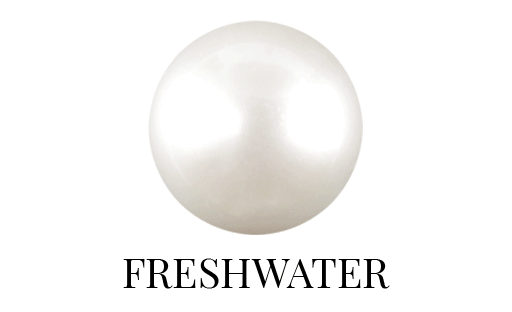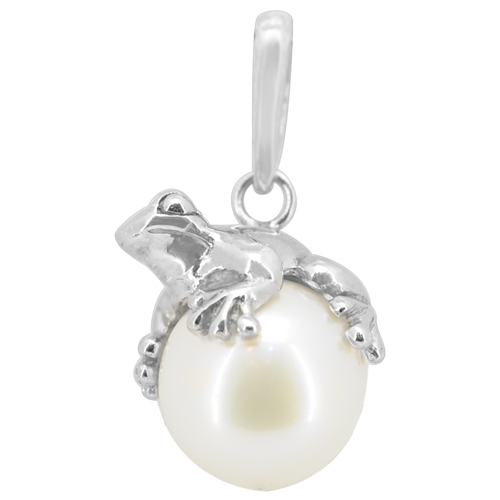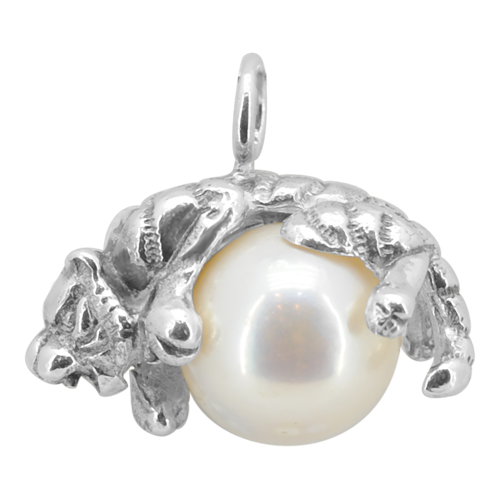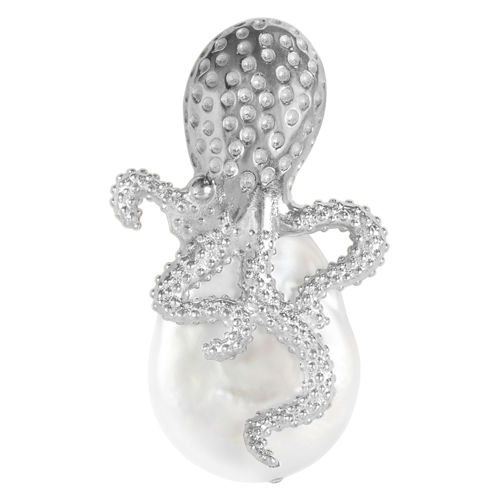
For centuries, pearls have been symbols of beauty and elegance. They are unique natural wonders born inside shells—whether in freshwater or the salty depths of the sea. In today’s world of modern pearl jewelry, many types of pearls exist, each with its own distinctive appearance and story.
In this post, we’ll explore the most well-known pearl varieties—from freshwater to rare saltwater treasures—including baroque, keshi, biwa, Tahitian, South Sea, and Akoya pearls.
When it comes to pearls, it's worth starting with a few words about pearl diving.
Before the advent of cultured pearls, the only way to obtain natural pearls was through pearl diving. Divers would plunge into deep waters in search of oysters that might contain hidden pearls. Because finding pearls was such a difficult and unpredictable process, pearls were considered extremely rare and unattainable at the time. For this reason, pearl necklaces were always knotted between each bead—so if the strand broke, the pearls wouldn’t all be lost. Today, the age of pearl diving has been replaced by modern pearl cultivation.

FRESHWATER PEARLS – THE BEAUTY OF VARIETY
The most common and most affordable type of pearl is the freshwater pearl, cultivated in rivers and lakes. Because they usually don’t contain a bead nucleus, they are composed entirely of natural material, making them denser and often more durable. As with all pearls, the longer a freshwater pearl remains inside the shell, the thicker and more lustrous its nacre layer becomes.
Freshwater pearls come in a wide variety of colors, shapes, and types. They are often distinguished by the texture of their surface. Genuine pearls are rarely perfect: tiny surface imperfections or slightly irregular round shapes are common and help differentiate them from synthetic pearls such as tecla or Mallorca pearls.
Freshwater pearls often feature delicate lines or subtle markings on their surface.
Natural colors: white, cream, peach-pink, and lavender purple.
However, freshwater pearls are often dyed to expand their color range. While some may worry that dyed pearls might lose their color over time, modern dyeing techniques are typically long-lasting and stable.
ALIA for You – Frog Pendant
Shapes: round, oval, rice-shaped, cylindrical, baroque.
With freshwater pearls, it's important to distinguish between the round and irregularly shaped types. Irregular pearls include types such as Biwa, Keshi, and Baroque pearls.
1. Round and Oval Freshwater Pearls
The most well-known form of freshwater pearls is the white round or oval shape.
Round freshwater pearls are generally nearly symmetrical. In this case, the price can vary greatly, depending on how perfectly shaped the pearl is. The price also depends on the size of the pearl and its quality—that is, how long it remained inside the mollusk, how shiny and thick the mother-of pearl layer on its surface is.
ALIA for You – Tiger Pendant
2. Irregular Pearls
Baroque Pearl
The baroque pearl has a completely amorphous shape—yet this is exactly what makes it so unique and eye-catching. Many people love it for its unusual, organic form.Baroque shapes can occur in any type of pearl, but they are most commonly found in freshwater and Tahitian pearls.
A baroque pearl is like a snowflake—no two are ever the same.
ALIA for You – Octopus Pendant
ALIA for You – Treasures of the Sea Earrings
Keshi
Keshi pearls are formed when, during the culturing process, the oyster rejects the implanted nucleus but continues to produce nacre. As a result, Keshi pearls are made of 100% nacre, which makes them exceptionally lustrous and unique.
Their name means "poppy" in Japanese — referring to their typically small size.
Biwa
Originally, Biwa pearls came from Lake Biwa in Japan. Today, however, the term more often refers to a specific shape: elongated, ribbon-like freshwater pearls, even if they are not sourced from Japan.
SALTWATER PEARLS – TREASURES OF THE SEA
Saltwater pearls are typically formed by marine oysters and often carry greater prestige than their freshwater counterparts.
They are classified into several categories depending on where they are cultivated and which oyster species produces them. These pearls generally have higher luster and are typically more expensive, as only 1 to 3 pearls may form in a single oyster, and the cultivation process is significantly longer than that of freshwater pearls.
Saltwater pearls can also be identified by tiny surface dots, which distinguish them from freshwater varieties.
1. Tahitian Pearl – The Black Pearl
The Tahitian pearl is one of the world’s most renowned and unique pearls, famous for its naturally dark shades. Although many refer to it as the “black pearl,” the color palette of Tahitian pearls is far richer than that. It is the only pearl that has a naturally dark color without any dyeing.
Tahitian pearls are cultured in the waters of French Polynesia. Their cultivation is particularly delicate, which significantly increases their value. If the water suddenly and drastically cools—due to a cold current or a cyclone—it can lead to mass oyster deaths. The same risk exists with extreme heat - in short, Tahitian pearls are sensitive to environmental extremes.
Typically, only one pearl is harvested from each oyster, unlike freshwater pearl farming, where 20–30 pearls can form in a single mussel. Thanks to their thicker nacre layer, Tahitian pearls are more durable and longer-lasting. Due to their exceptionally unique and exclusive appearance, they are among the most desirable pearls in the world.
Colors: shades may include green, purple, blue, silver, or bronze.
Shapes: round, teardrop, or baroque (amorphous).
2. South Sea Pearl – The Queen of Pearls
The South Sea pearl is among the largest, rarest, and most valuable cultured pearls in the world. What sets them apart is their exceptionally thick nacre, natural colors, subtle luster, and refined surface.
South Sea pearls are farmed in the seas around Australia (white pearls), the Philippines, and Indonesia (golden pearls). Flawless specimens are considered extremely rare. These pearls are known for their silky, deep, luminous luster.
Colors: white, silver, champagne, golden.
Shapes: round, teardrop, oval.
3. Akoya Pearl – Classic Elegance
The Akoya pearl is one of the first successfully cultured saltwater pearls in the world. They are mainly farmed in Japan, grown inside the Pinctada Fucata oyster. This small marine oyster species produces smaller but highly lustrous pearls.
Because the oyster is more sensitive than larger species, it requires careful handling during cultivation. To this day, the Akoya pearl remains one of the most popular pearl types and is always an elegant choice.Akoya pearls are known for their perfectly round shape, typically small in size, and their white or cream coloring.
4. Pipi Pearl – The Tiny Wonder of the Pacific
The Pipi pearl is one of the smallest natural pearls in the world. Like the famous Tahitian pearl, the Pipi pearl also originates from French Polynesia, but it forms in a completely different species of oyster. In Polynesian, “pipi” refers to a small shell or snail.
Colors: Cream, gold, pink, peach, and sometimes greenish hues.
ALIA for You – Panther Necklace
Overall, pearls have always been held in high esteem — their natural beauty is timeless. Pearls consistently radiate feminine elegance, and no matter how you wear them, you're guaranteed to make an impression. Every pearl has its own unique story.







.png)